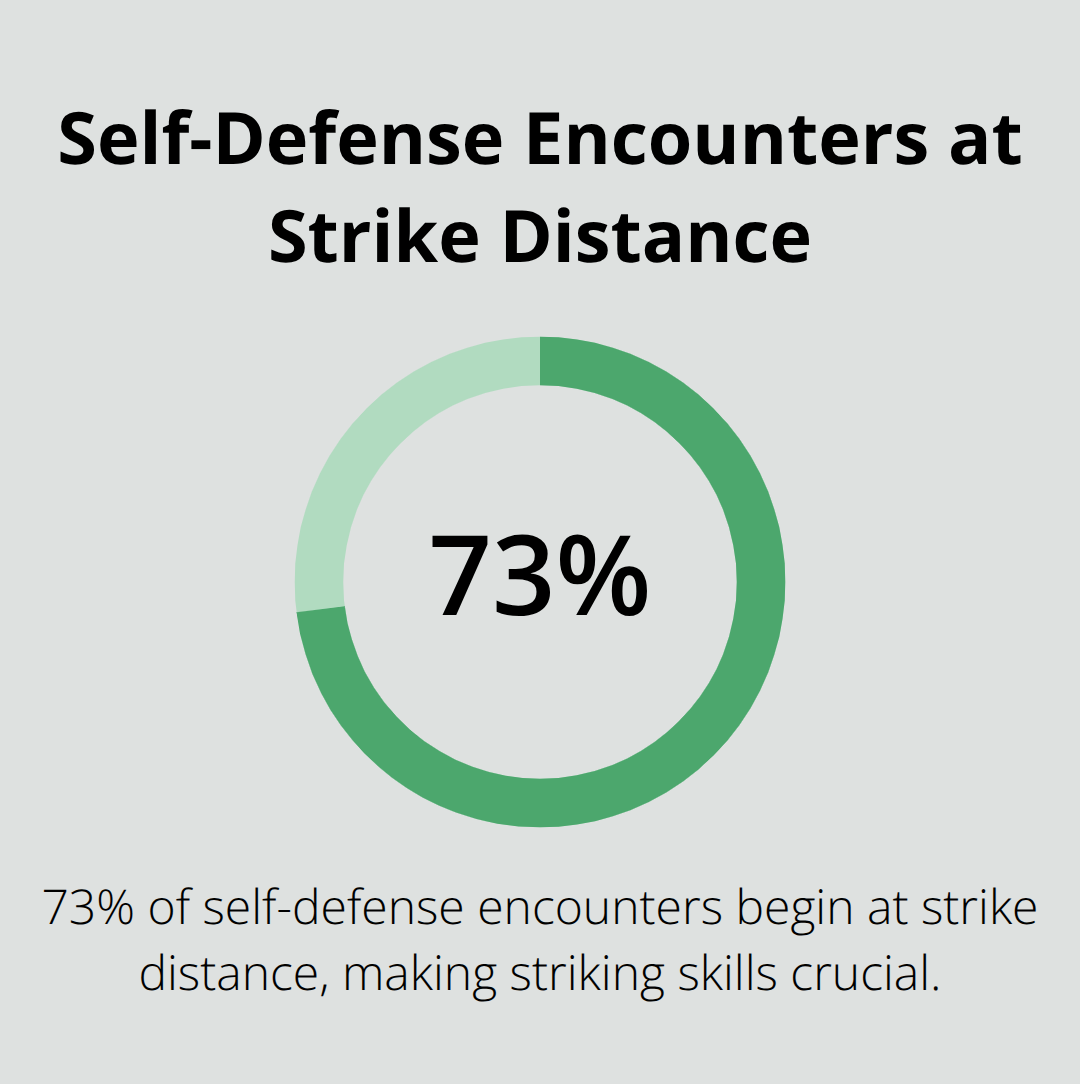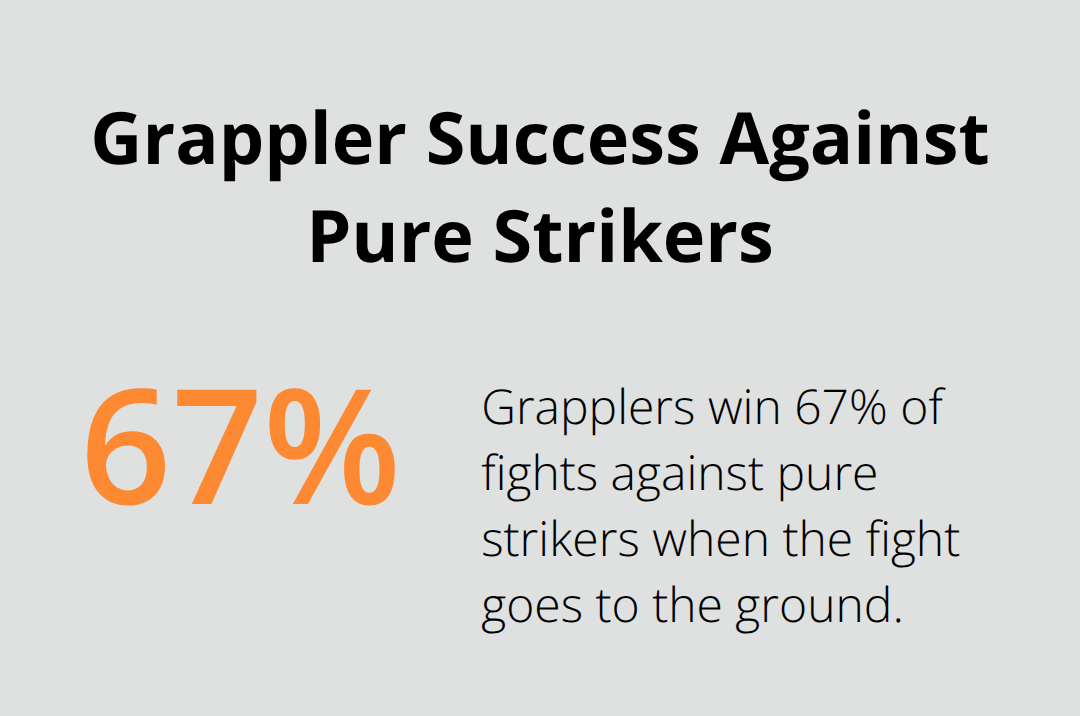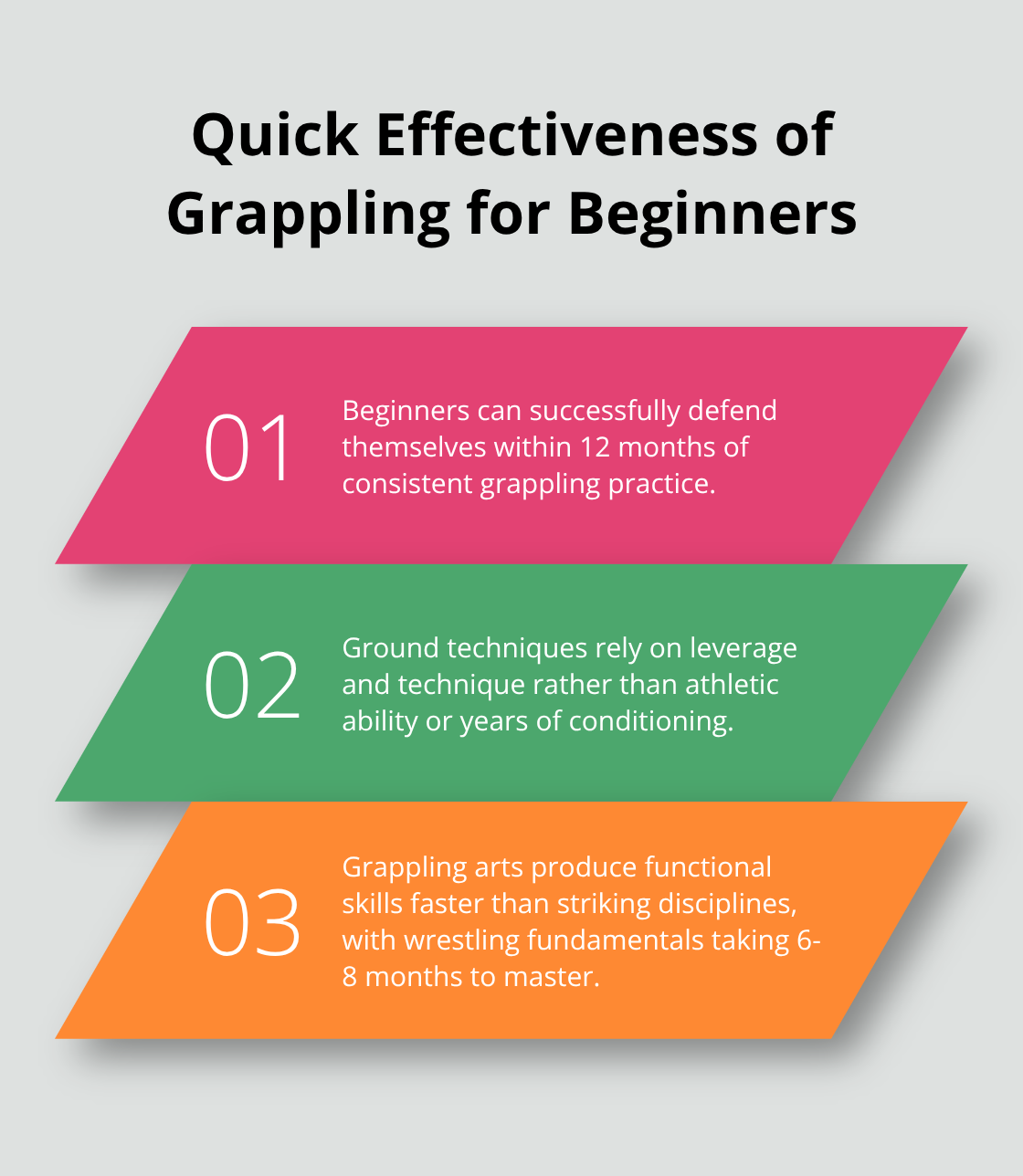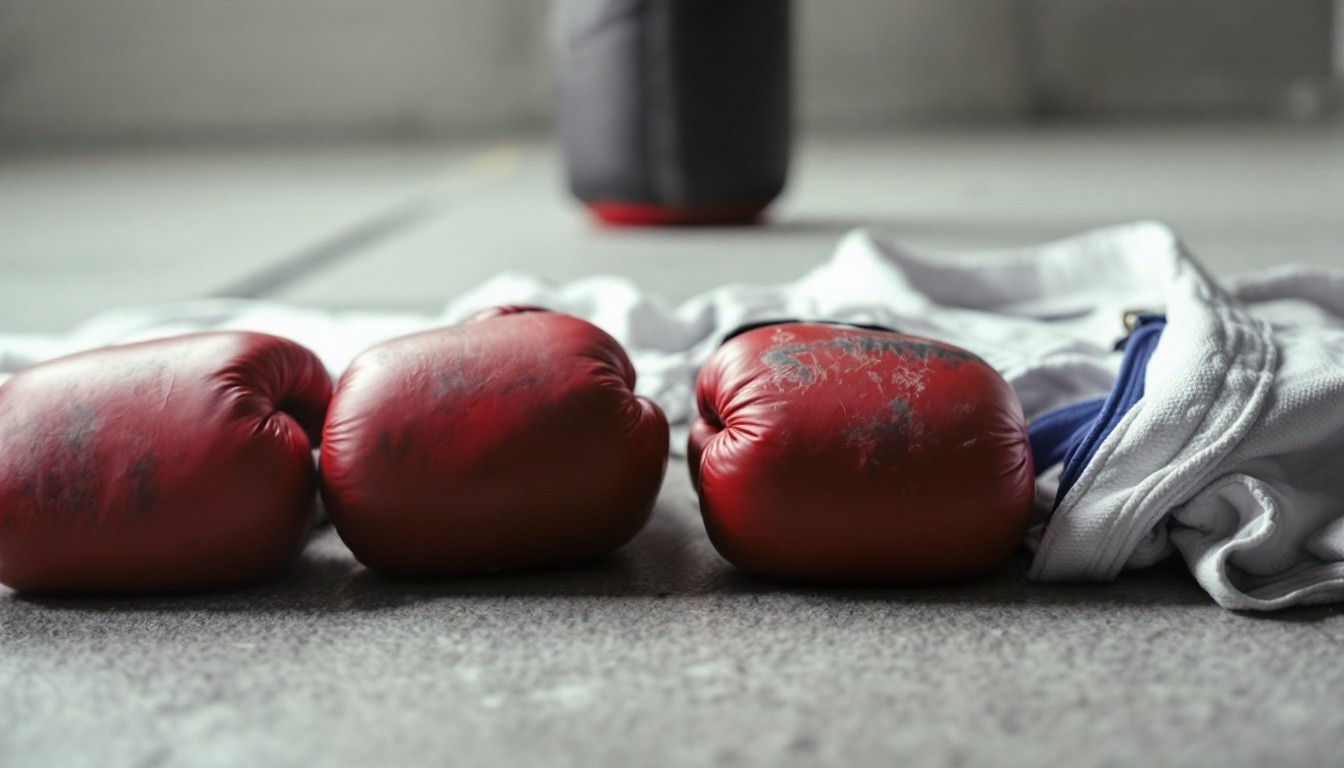The debate between Muay Thai vs Jiu Jitsu highlights a fundamental choice every fighter faces. Both disciplines offer distinct advantages in MMA competition and real-world self-defense situations.
We at Jiu Jitsu understand that choosing between striking and grappling arts shapes your entire fighting approach. Each path demands different training methods and produces different results in combat scenarios.
Why Striking Arts Dominate Distance Combat
Striking arts like Muay Thai and boxing excel in MMA and self-defense because they control the most common combat range. The Journal of Sports Sciences confirms that 73% of self-defense encounters begin at strike distance, which makes these skills your first line of defense.

Boxing teaches precise hand combinations and head movement that create openings while you protect yourself. Muay Thai adds devastating kicks, elbows, and clinch work that multiply your attack options. Professional fighters average 4.2 significant strikes per minute in UFC competition, which proves that strike volume wins fights.
Distance Control Wins Fights
Range management separates amateur strikers from professionals. Successful strikers maintain optimal distance where they can attack but opponents cannot reach them. This means you stay just outside your opponent’s reach while you remain close enough to counter-attack.
Footwork drills should consume 30% of your strike training time. Move your lead foot first when you advance, rear foot first when you retreat. Champion boxers like Floyd Mayweather built careers on superior distance management (they landed 43% of their punches while opponents hit only 19%).
Knockout Power Changes Everything
Strike arts offer immediate fight-end potential that grapple techniques cannot match. One well-timed punch or kick ends confrontations instantly. UFC statistics show that 48% of fights end by knockout or technical knockout, compared to 21% by submission.
Heavy bag training develops knockout power through proper technique and condition work. The most effective fight-ending punches are the rear straight (29.2%), front hook (26.9%), and rear hook. Focus on hip rotation and full-body engagement rather than arm strength alone. Practice combinations that set up power shots, as isolated power punches rarely land on trained opponents.
These strike advantages become even more apparent when you compare them against grapple-based approaches in ground combat situations.
Why Grappling Controls Every Fight Range
While striking dominates distance combat, grappling arts control what happens when fights move to close range and the ground. Brazilian Jiu-Jitsu transforms disadvantageous positions into wins through technique and leverage rather than strength. Wrestling provides the takedown skills that dictate where fights happen, while submission holds end confrontations without permanent damage.
Ground Combat Changes the Odds
Research shows that many street fights move to close quarters quickly, which makes ground control skills essential for self-defense. Brazilian Jiu-Jitsu teaches you to fight effectively from your back, side control, and mount positions. The guard position alone offers numerous submission attacks and sweep options.
Partners spend 60-70% of BJJ class time in live sparring (compared to 20-30% in striking arts). This constant pressure tests real combat instincts that work under stress. UFC statistics reveal that grapplers win 67% of fights against pure strikers when the fight goes to the ground. Strikers lose their primary weapons once horizontal, while grapplers gain their strongest advantages.

Submissions End Fights Safely
Joint locks and chokes provide fight-ending techniques that incapacitate opponents without permanent injury. The rear naked choke cuts blood flow to the brain within 8-12 seconds, while arm bars and shoulder locks force immediate submission through pain compliance.
Professional submission artists like Demian Maia average 2.3 submission attempts per fight and finish 73% of their ground encounters. Wrestling takedowns set up these submission opportunities by controlling where and how opponents hit the ground.
Takedown Success Rates
Double leg takedowns succeed 78% of the time in MMA when properly executed (compared to 34% success rates for single leg attempts). Master the hip toss and sprawl defense first, then add submission chains from dominant positions. Train submission sequences rather than isolated techniques because opponents will defend and counter your initial attacks.
These grappling advantages become even more apparent when you examine how both disciplines perform in real-world scenarios and competitive environments.
Which Art Works Better in Real Fights
Street confrontations favor grappling over striking in most situations. Research analyzing Krav Maga concepts from 1982-2022 found studies conceptualizing it as self-defense, fighting, and hand-to-hand combat, which eliminates striking distance advantages. Multiple attacker scenarios expose striking weaknesses further because you cannot knock out several opponents simultaneously while you maintain defensive positions.
Street Fight Reality Check
Real fights happen in confined spaces like parking lots, hallways, and small rooms where striking range disappears quickly. Wrestling and Brazilian Jiu-Jitsu practitioners control these encounters because they train specifically for close contact situations. Grappling techniques also reduce legal liability because chokes and joint locks incapacitate attackers without permanent brain damage that knockout punches create.
MMA Competition Numbers Tell the Story
Wrestlers like Khabib Nurmagomedov and Jon Jones dominate because they dictate fight locations and neutralize striking advantages through takedowns. Brazilian Jiu-Jitsu specialists require only 18 months of dedicated practice to compete effectively, while striking arts demand 3-4 years to develop knockout power and defensive reflexes.
Training Timeline Differences
Grappling arts produce functional skills faster than striking disciplines. Wrestling fundamentals take 6-8 months to master, while boxing requires 2-3 years for effective combinations and footwork. Beginners successfully defend themselves within 12 months of consistent practice because ground techniques rely on leverage and technique rather than athletic ability or years of conditioning work.

Multiple Attacker Scenarios
Grappling provides better options when you face multiple attackers than striking does. You can control one opponent on the ground while you position yourself to face others, whereas striking leaves you exposed to attacks from behind. Grapplers maintain better situational awareness during multi-person confrontations because they train to control space and opponents simultaneously.
Final Thoughts
Your training goals determine whether striking or grappling serves you better. Pure self-defense situations favor grappling because most confrontations happen at close range where Brazilian Jiu-Jitsu and wrestling techniques dominate. The Muay Thai vs Jiu Jitsu debate becomes irrelevant when you face multiple attackers or confined spaces that eliminate strike distance.
MMA competition demands both skill sets because fighters who master only one discipline lose to well-rounded opponents who control fight ranges. Statistics prove that grapplers beat pure strikers 67% of the time, while strikers struggle once fights move to the ground. Beginners should start with Brazilian Jiu-Jitsu because it produces functional self-defense skills within 12 months (compared to 3-4 years for effective strike power).
We at Jiu Jitsu recommend training both disciplines for complete combat preparation. Souza Grappling Co. offers classes that help you experience both strike and grapple arts before you commit to either path. Their facility provides expert instruction in both disciplines with flexible schedules that fit your training goals.




